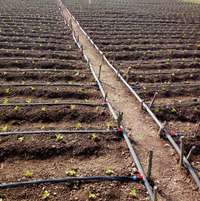
Figure 1. Drip irrigation on a field scale. Source: Robert Walle
Drip irrigation and its associated practices allow farmers to supply water to crop roots according to plant needs. Technicians promote drip irrigation for water conservation, weed control, plant disease reduction, and erosion control. Drip irrigation can be implemented in various locations on field (Figure 1) and household scales. You may ask, however, “Is drip right for me?” This article outlines factors to help you decide if drip irrigation is an appropriate technology for your context and summarizes alternative irrigation methods.
Benefits of drip Irrigation
Drip irrigation has many benefits, the principal being water conservation. Drip irrigation focuses small flows of water on the root zone of crops. In comparison to irrigation methods like overhead watering, drip systems can irrigate more plants with the same amount of water. The localized and slow application of irrigation has other benefits as well.
With drip irrigation, water can be delivered to the crops, not weeds. The weeds won’t grow if they don’t get water. Controlling weeds by localized watering is labor-saving and desired by farmers and gardeners alike. You can also use drip irrigation systems to deliver nutrients to crops, a practice called fertigation. Fertigation allows you to apply liquid fertilizers, including manure and compost teas, directly to the root zone of crop plants.
Supplying water to the root zone keeps leaves dry, preventing wet conditions that many plant diseases need to develop. Thus, drip irrigation helps control diseases that spread under wet conditions (Café-Filho et al., 2018).1
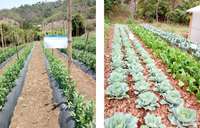
Figure 2. Drip irrigation combined with plastic (left) and organic (right) mulch. Source: Robert Walle
Drip irrigation can also be combined with complementary practices. Mulching, for instance, can be combined with drip irrigation for further conservation of water and reduced weed growth (Figure 2). Mulches block weeds from sunlight and protect the soil surface from erosion caused by the splashing of water droplets from rain or overhead irrigation.2 It is easy to see that drip irrigation and associated practices have many benefits for crop production.
Tradeoffs of drip irrigation
More equipment is needed for drip than other types of irrigation. Water must be distributed under pressure through specialized tubing called drip tape (Figure 1), flowing out of the tubing through small holes in the tape called emitters. Filtration is needed to avoid the most common problem with drip irrigation, the clogging of emitters. Filters, fittings, and connectors may or may not be available. You may need technical help for installation, depending on the complexity of the system.
With water delivered through drip tape, drip irrigation is best suited for planting in rows. In low-resource contexts, or with irrigation kits, you will not have much choice in drip tape emitters. There may be only one spacing of emitters available. This could be a problem where farmers and gardeners are not accustomed to planting in rows or being constrained to uniform plant spacing.
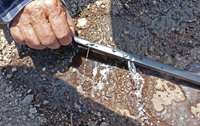
Figure 3. Water leaking from ruptured drip tape. Source: Robert Walle
While drip irrigation conserves water, success requires consistency. The system needs to be regularly maintained and checked for leaks (Figure 3). Leaks need to be repaired in a timely way, as delays in watering could quickly result in drying out of the plant root zone.
A promising context
Drip irrigation can be implemented in rural areas; however, materials for drip systems will likely be easier to find in urban settings. People in urban and peri-urban environments are looking to produce more of their own food because of rising food prices and other concerns. The Food and Agriculture Organization (FAO) refers to peri-urban agriculture as “agriculture practices within and around cities…” (FAO, 2015).
Most people living in cities and peri-urban areas have never grown their own food. They will need both irrigation and extension services for year-round crop production. In city, community, or peri-urban gardens, available land is scarce, but we can still produce food given enough sunlight and water.
Foundational concepts
No matter which irrigation method is used, first evaluate your soil and the water source.
Know your soil
Effective irrigation requires you to know your soil texture, and how this affects water infiltration. Water infiltration rates for clayey soils are slower than for sandy soils. Sandy soils need more frequent irrigation than clays do.
Make sure, regardless of your irrigation method, that the water you apply reaches the root zone. The soil surface may look dry (or wet), but that may be just how it looks. Not knowing how water moves in soil can cause you to over or under water your garden.
Use a machete or a shovel to inspect the soil profile and get to know your specific conditions. See how long it takes for irrigation water to reach just below the roots of your crops. A two- to three-hour drip irrigation event may wet the surface as well as the root zone of a sandy soil. With clayey soil, the same application may cause puddling, without reaching the roots.

Figure 4. Illustration of the effect of soil type on the wetting zone around a plant receiving water from a drip irrigation emitter. Source: Stacy Swartz, adapted from DripWorks
By learning your soil texture, you can make a better choice on which irrigation system is best for you. Soil erosion is most likely to occur when the rate of water being applied to the soil surface exceeds the rate at which water can move downwards into the soil. With its slow rate of water application, drip irrigation is a good choice for avoiding surface runoff on clay soils. On sandy soils, the slow rate of application with drip irrigation minimizes the loss of water —and any liquid fertilizer being applied— to downward movement past the root zone. On sandy soil, shorter and more frequent watering is advisable to keep water from moving straight down past plant roots (Figure 4).
Do you have enough water?
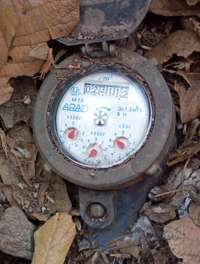
Figure 5. Example of a water meter. Source: Robert Walle
Before irrigating, we need to ensure there is enough water. The Sphere Association humanitarian guidelines consider 15 L as the least water usage —for drinking and cleanliness— per person per day (Sphere, 2018). As peri-urban agriculture becomes more necessary and popular, water conflicts are likely to arise if we cannot meet this basic need, making water conservation a necessity. Where water boards charge users in a community water system a flat fee, any added use for irrigation may not increase their bill but may lead to water conflicts. Water meters (Figure 5) can help people irrigating pay their fair share and give a basis for calculating water rates. People hesitate to install water meters, because some meters are inaccurate and water users are reluctant to have their water use measured.
The Sphere humanitarian guidelines do not consider agriculture but recognize water reuse for gardening in urban and peri-urban environments. Reused water is suitable for use on forage crops and ornamentals. If you have enough water, and the water is of acceptable quality,3 you can use it for irrigation.
Technical Details for Small-Scale Drip Irrigation
A typical drip tape system has emitters spaced 30 cm apart with each emitter supplying water at a rate of 1 L per hour. Below are additional details to be aware of.
Water Pressure
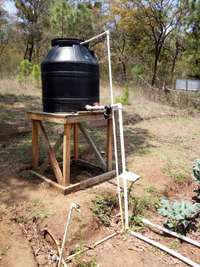
Figure 6. An elevated tank used to supply water for drip irrigation. Source: Robert Walle
Drip irrigation requires pressure to work. For small systems (< 600 m of rows for up to 500 m2), drip irrigation can operate at very low pressures. It is common for an elevated barrel or tank to provide water pressure and limited water storage (Figure 6). The tank can serve as a place to mix in fertilizer or manure tea with irrigation water. It is unnecessary to pressurize small irrigation systems with pumps. There is a risk of fittings blowing out and of leaks at weak points if the pressure is too high. Too little pressure will cause problems with air and water in the lines.
New advances in materials are allowing drip irrigation, especially smaller systems, to work at lower pressures, 0.1 bar (1.45 pounds per square inch) or less. Some emitters will “auto compensate” for use on slopes —for equal pressure along the slope. Check the manufacturer’s specifications before you buy any drip equipment.
Filtration
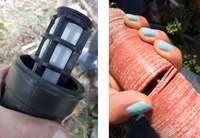
Figure 7. Example of a mesh (left) and disk (right) filter. Source: Robert Walle
Filtering irrigation water removes small solids, sand, and silt found in many water sources. Small irrigation systems often use rudimentary cloth filters to remove small particles, but drip irrigation requires better filtration. Typical filters are made of fine metallic mesh, or corrugated plastic disks to retain small solids (Figure 7). As materials improve to compensate for low pressures, the system needs to deliver clean water to each emitter.
Drip irrigators must remember filtration, as particles and precipitates will clog drip systems. Use of grey water (household wastewater), which is likely high in sodium and potassium salts and alkaline in pH, leads to greater precipitation and possible clogging of systems.
Maintenance in Drip Systems
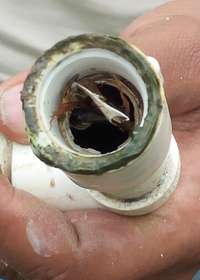
Figure 8. Slime in an irrigation pipe. Source: Robert Walle
Drip systems need more maintenance than hoses and sprinklers. The first step of maintenance is cleaning the filter. Cleaning the filter supports proper water flow. Pay attention to what you are cleaning from the filter. The presence of slime, caused by algae or bacteria, or mineral deposits will give you insights about your water quality (Figure 8).
Flushing
When installing low pressure systems, each terminal end of the drip tape rows is bent backwards three cm. A small section of drip tape is used to cover and hold the fold. Open the line to flush the system and then close it again by repeating the process. This works well with low pressure systems and shorter runs of drip tape. Larger and high-pressure systems use small valves for flushing the lines. Tying or closing the drip tape will not allow flushing.
Vinegar (acetic acid) dissolves small amounts of precipitates from the drip tape surface, but crop growth limits access to individual emitters. Larger amounts of precipitates around emitters are dissolved by adding phosphoric acid to the irrigation water at a concentration of 0.6% for 15 minutes.
Repairs
Besides maintenance, irrigation systems need repairs from time to time. As we grow crops and work in our gardens and farms, we need to inspect the drip irrigation tubing. We should make sure that the drip system is working to supply water. As we weed, we can puncture drip lines and water transmission lines can get broken, in addition to animal damage. We need to be ready to repair lines whenever they break. Familiarity with PVC tubing, and having connectors and extra lines and drip tape for replacement is necessary.
Alternatives to drip irrigation
In addition to drip irrigation, there are a number of other irrigation methods to consider. Here we summarize a few of those, with benefits and tradeoffs shown in Table 1 at the end of this section.
Small-scale, low-volume Innovations

Figure 9. A wick garden in which water and/or liquid fertilizer is distributed through underlying carpet to plants (Price, 1996). Source: ECHO staff
Some innovations include perforated hoses, single emitters on tubing for small applications, porous hoses, and wicks (Figure 9) and buckets with small holes (Berkelaar, 2012). All these supply water to plants at low flow rates and are simplifications of “drip” technology. A very simple irrigation system consists of a 5 gallon (18.9 L) bucket and two, 4.6 m sections of drip tape (ECHO Staff, 1996). Watering of individual trees is also possible with simple pans or any container with small holes perforated in them as described by Berkelaar (2007).
With these individual innovations, soil texture and water source principles still apply. You may need emitters to be further apart in clay soils than in sandy ones. For sandy soils, you will use more frequent, shorter applications than for clay soils. If the garden is very small
(< 20m2), watering with simple perforated hoses, wicks (Berkelaar, 2012) or by hand is sufficient, and drip irrigation tape may not be the best choice.
Hand Watering
Hand watering applies to the smallest garden plots, containers or individual plants. Watering plants by hand is manageable in small areas, using a cup, bottle, bucket, watering can, or hose. Watering by hand brings an intimacy with plants. Simple and inexpensive, one can adjust the flow of water to control application. Best irrigation practices place water where available to plant roots and allow water to soak into the soil without puddling. This keeps leaves dry to avoid spreading plant diseases. Hand watering becomes more difficult as the cultivation size increases. For larger-scale production, watering by hand is labor intensive and one looks for more efficient ways to irrigate.
Sprinkler Systems
Available, inexpensive, and easy-to-use, sprinkler irrigation is a frequent choice (Figure 10). Water from a source with enough elevation gives the pressure to run the sprinkler. Water and pressure losses depend on the quality of the connections and friction through the hose.
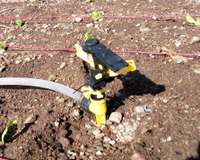
Figure 10. Example of sprinkler irrigation. Source: Robert Walle
Sprinkler irrigation can cover sizeable areas with little effort or investment. Farmers can connect one or more sprinklers to hoses and move them to cover the production area. Sprinkler irrigation helps establish crops that will not need later irrigation, such as cover crops. Outside of the cultivated area, sprinklers will increase water use and weed growth. Micro-sprinkler use is increasing and helps improve water use efficiency, by concentrating irrigation around the base of trees in fruit orchards.
Furrow Irrigation
Furrow irrigation supplies water to small channels (furrows) formed on the soil surface, supplying water to crops planted on the ridges. This irrigation method requires low slopes and a finer-textured soil than coarse sands. Furrow irrigation requires topographical studies for larger scale applications but is possible on small plots. Row spacing, planting patterns, crop densities, and erosion control are necessary design elements. Preparing the furrows to avoid overtopping (of water from the tops of the furrows) during water application reduces erosion and crop loss. Erosion management is essential in design and operation because of the irrigation water’s higher volumes and velocity.
The large amounts of water used in furrow irrigation necessitates planning to avoid waste and conflict between different community uses. Furrow irrigation is common on riverside plots where the water source is close, and pumps can supply large volumes of water to crops. Growers use furrow irrigation on larger plantings (> 500 m2).
| Irrigation Type | Advantages | Disadvantages | Comments |
|---|---|---|---|
| Hand | For smaller plantings | Labor intensive | Fosters intimacy with plants and soil Suited for areas 20 m2 (without nozzles) to 200 m2 in size |
| Furrow | Little to no special equipment | Requires topographical studies, special land preparation, and a large water source Not for small areas |
For larger plantings (> 500 m2) |
| Sprinkler |
Inexpensive |
Promotes excess weed growth Higher pressure than drip Need risers for some crops |
Can have problems with overspray |
| Drip Alternative (low flow rate) |
For very small plantings Water conserving |
Not for row crops | Good for individual plants or fruit trees |
| Drip Tape | Conserves water controls weed growth saves labor allows for fertilizer applications |
Higher investments and maintenance | Suited to row crops with 600 m or less of row length and areas < 400 m2 in size |
Conclusion
Smallholders can produce much food on small farms and gardens year-round with the proper irrigation system. The most important criteria are the water source and production of food. Depending on the size of the area, the water source, and the crops grown, drip irrigation can help conserve water and control weeds. New materials are available to run drip irrigation at low pressures. This article aims to help novice growers get started with irrigated agriculture and avoid water conflicts while producing food year-round.
Good urban agriculture depends crucially on producers being granted proper agricultural extension and advice, including assistance for selecting crops.
— Mayor Iga of Kampala (FAO, 2015)
If drip irrigation looks promising for you and/or farmers you work with, consider trying it on a small area. This will help you gain firsthand experience and evaluate its effectiveness under your conditions. ECHO’s bookstore carries a simple gravity-based system using a 20-L bucket, as well as larger 132-L kit [http://edn.link/dripkit]. Kits like these are an excellent way to get started with drip irrigation.
References
Ayers, R.S. and D.W. Westcot. 1994. Water Quality for Agriculture. FAO (Food and Agriculture Organization) Irrigation and Drainage Paper 29 Rev. 1. https://www.fao.org/3/t0234e/t0234e00.htm.
Berkelaar, D. 2007. Pot Drip System for Tree Irrigation. ECHO Development Notes no. 97.
Berkelaar, D. 2012. Wick Irrigation. ECHO Development Notes no. 115
Café-Filho, A.C., C.A. Lopes and M. Rossato. 2018. Management of Plant Disease Epidemics with Irrigation Practices. In: Irrigation in Agroecosystems. Ch. 8. http://dx.doi.org/10.5772/intechopen.78253.
ECHO Staff 1996. Drip Irrigation. ECHO Development Notes no. 51
FAO. 2015. Urban and Peri-urban Agriculture. Food and Agriculture Organization. https://www.fao.org/unfao/bodies/coag/coag15/x0076e.htm.
Price, M.L. 1996. Rooftop and Urban Gardening. ECHO Technical Note no. 31.
Sphere Association. 2018. The Sphere Handbook: Humanitarian Charter and Minimum Standards in Humanitarian Response, fourth edition, Geneva, Switzerland.
Further Reading
Dripdepot products and tutorials: https://help.dripdepot.com/support/home.
Sijali, I.V. 2001. Drip Irrigation: Options for Smallholder Farmers in Eastern and Southern Africa. Regional Land Management Unit/Sida. Technical Handbook No. 24. https://www.worldagroforestry.org/publication/drip-irrigation-options-smallholder-farmers-eastern-and-southern-africa.
Collection of drip irrigation resources on ECHOcommunity.org: http://edn.link/drip
Cite this article as:
Walle, R. 2023. Is Drip Right for Me? ECHO Development Notes no. 158.